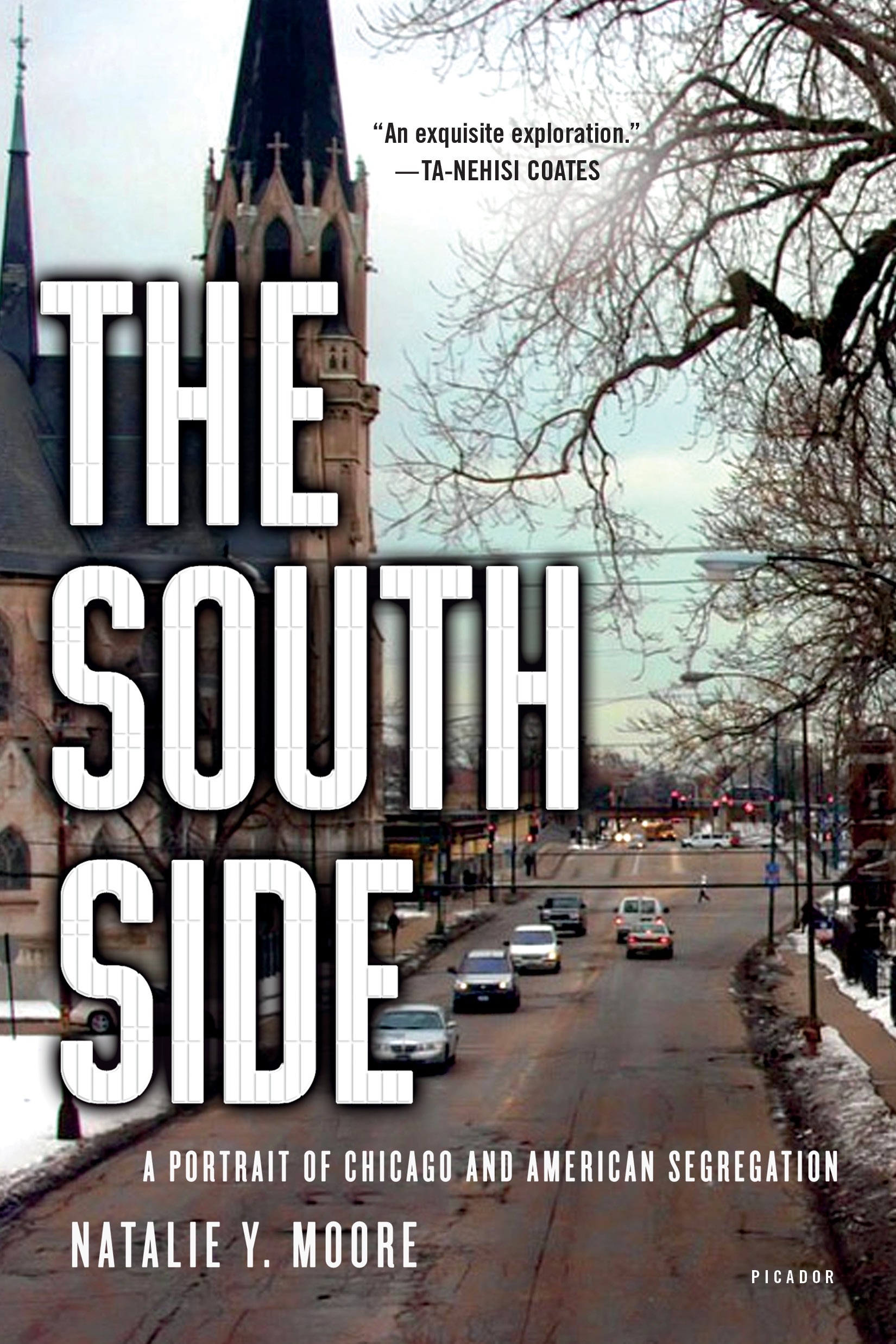In the summer, sometimes I prefer to read non-fiction books where I can dive into one particular topic and re-emerge a bit more knowledgeable. The South Side, an acclaimed 2016 book by Natalie Moore, is one such example; an account of segregation on Chicago’s South Side written in an accessible style and conversational tone.
Moore is a descendent of the Great Migration, a Chicago Public School (CPS) graduate and a proud South Side native. Currently a reporter for WBEZ focusing on the South Side, she’s won numerous awards for her work on segregation and inequality, but her impressive credentials don’t get in the way of her storytelling.
Reading this book feels like having a multi-day conversation with one of your most brilliant friends who loves their hometown. And while the subject matter may seem obvious to Black readers or anyone who is aware of Chicago’s cultural and social climate, Moore writes with empathy and great intellect, managing to break down complicated topics and history into simple issues and numbers all readers can understand.
She tackles many different societal ills and inequities that contribute to segregation, writing about housing, education, violent crime, and food deserts. Even if you intrinsically know much of what Moore writes about, it’s both disturbing and validating to read this book and have the data to back up your intuition.
Moore writes about the history of Chicago and segregation as well as the present day, but she also weaves in her own personal story. She grew up in a relatively middle-class home in Chatham and as an adult bought her first home in Bronzeville, so she talks openly about her feelings around gentrification and how she may be viewed as a Black gentrifier—though she has argued Black neighborhoods don’t really gentrify as expected. She is also willing to admit when she has preconceived notions—for example, when she goes to interview public housing residents living in the Robert Taylor Homes. “I walked into that interview thinking that Taylor residents surely wanted to leave. I walked out curbing my own biases to appreciate that the cliché of home is real. I thought about how it would feel if an outsider unsentimentally ordered me and my family out of our home. No one wants to be told that where they live is fucked up.” This is an assumption many folks might also hold and I appreciated Moore’s candor.
I learned a lot from this book—small facts like Bronzeville not being an official Chicago community area, as well as big lessons concerning the history of public housing in Chicago. As someone who doesn’t own a home, I found her chapter on public housing, block clubs, rentals, and homeownership particularly interesting and it certainly made me want to be more thoughtful about which neighborhood I move to this fall. She also succinctly explains why homeownership is not the best way for Black people to build wealth, which is remarkably refreshing and unfortunately still a timely message.
While the book covers heavy topics and racist tomfoolery, there’s also a bit of hope within the pages. Moore’s journalism background shines through not just in the interviews she pulls from, but also the solutions she offers toward solving some major problems and reducing racial inequities. She is clear-eyed about the challenges ahead but also cautiously optimistic, as are the scholars, activists, and residents she interviews. Not all of the solutions offered may be achievable in this climate, but at a time when folks are finally starting to reimagine public safety, education, public health, and their relationship to their neighbors and communities, this book feels urgent and important, six years after its initial publication. After all, dreaming is better than Chicago’s current approach which, as Moore notes, is to do nothing especially when it comes to education. “To them [CPS] the problem is too big; that in action implies tacit approval of separate yet unequal. And right now Chicago isn’t even exploring ideas.”
A compelling hybrid of journalism and historical analysis, The South Side feels deeply researched but also movingly personal as Moore offers her perspective as someone who intimately knows and loves the South Side and Black people. Since the book was published, some things and people have changed or moved (she interviews the beloved owner of the Abundance Bakery who passed away earlier this year, Rahm Emanuel is no longer the mayor, etc.).
My hope is that this book opens people’s eyes or fosters their curiosity, prompting them to keep reading and learning about segregation, and how to be a better neighbor and Chicagoan. I would also selfishly love to see Moore write an updated edition or a follow up of some sort. Occasionally her reporting also results in her updating the content of the book without explicitly naming it, such as a piece from May 2022 about the closing of the Whole Foods in Englewood, a store whose opening she covers in the book’s chapter on food deserts. I would encourage all readers to follow her work and her continued reporting on communities on the South Side.
Natalie Y. Moore, The South Side: A Portrait of Chicago and American Segregation. $18 (paperback). Picador, 2016. 272 pages.
Ariana V. is a communications professional from Chicago who currently resides in DC. This is her first story for the Weekly




I appreciated this piece. I was swept away in the White Flight from my childhood home, and that move, if not traumatic, still leaves me saddened at the loss of friends and the Elm canopied streets of Chatham. I went to Dixon school but had to move away before I graduated with my childhood friends. I cherish the memory of my “old neighborhood “ and lament to this day the racism that forced my family to abandon the only “home” I’d ever had (1957)